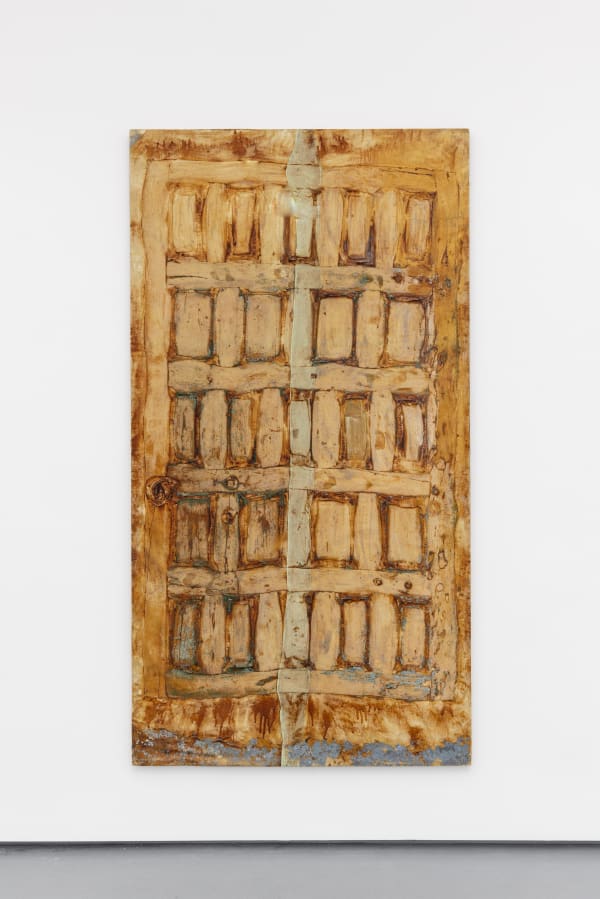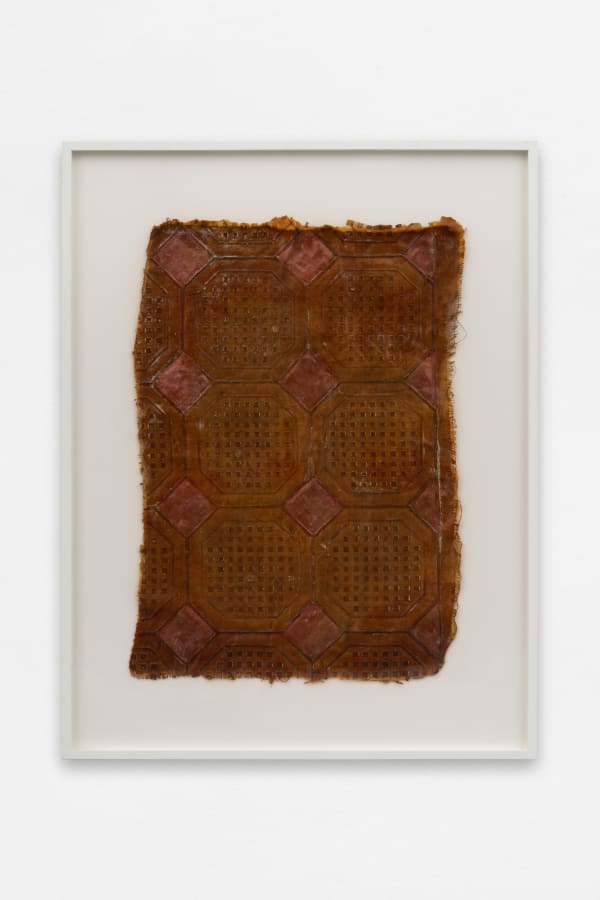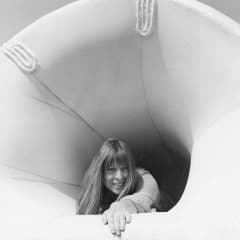La rose de Paris Heidi Bucher
The House’s Skin
Swiss artist Heidi Bucher (born Adelheid Hildegard Müller, in Winterthur, Switzerland) was part of a wave of active avant-garde women artists of the 1970s, who then somewhat fell into obscurity until their relatively late rediscovery.1 Bucher’s recognition truly came with the major retrospective Metamorphoses, organized by the Haus der Kunst in Munich in 2021. This exhibition enabled the public to discover the scope of her work, initially composed of drawings, textile works and performances, and which eventually evolved into spatial installations featuring large latex impressions of furniture, doors or windows of a building, preserving their memory while physically embodying them.
Bucher studied sewing and textile design at the Zurich School of Arts and Crafts, attending the classes of Max Bill. She then spent time in Paris and London. Her first works are abstract collages incorporating fragments of seashell and mother-of-pearl, as seen in La rose de Paris (1954). Following a trip to New York, she returned to Zurich and married artist Carl Bucher (1935 – 2015) in 1960. Between 1970 and 1971, they moved to Montreal then Toronto, where they both collaborated on Landings to Wear, types of wearable costumes-cum-sculptures the couple displayed throughout the streets of New York.
Between 1972 and 1973, they moved to Los Angeles, where Heidi Bucher befriended Ed Kienholz. She came into contact with the feminist art scene, along with performance art and body art. That’s when she created Bodywrappings and Bodyshells, two series of sculptures made of synthetic foam and coated with mother-of-pearl. Those soft, inhabitable shapes were activated from within by her husband and their children, Indigo and Mayo, who wandered Venice Beach wrapped in them. These futurist works form the foundation of Bucher’s future work, as they are sculptures created from the body, where the envelope and the body are closely connected. The movements of the person sculpt the shape, and the shapes also mold the body. This envelope also functions as a protective shell, almost animal-like, a sort of cocoon allowing the hatching of a larva.
With this series, Bucher also aligns herself with Soft Sculpture, which was a popular trend during the 1960s and 70s, represented by artists like Claes Oldenburg as well as many women artists who opposed the rigidity and verticality of sculpture’s traditional materials. Artists often turned to fabric and materials that were softer, more fragile and fluid. This trend was initially highlighted by Lucy Lippard’s Eccentric Abstraction exhibition in 1966. Bucher’s Bodyshells also evoke a theme that would later recur: The Woman-house, a blend of architecture and organic form that would become a common thread in her subsequent works.
In her own way, Bucher can be seen to align with artist Louise Bourgeois, who, from her first engravings and paintings, placed the naked female body within rigid architectural structures. “Sculpture is the body; my body is the sculpture,” as Bourgeois would say. This theme can evoke the domestic confinement of women within the home, but it can also lend symbolic value to the room or the family home, which may serve as either an extension of the imagination or a suffocating prison. From the 1980s onward, after separating from her husband, Heidi Bucher set up her studio in a former butcher shop in Winterthur and began creating latex impressions of facades, doors and windows.
Her very specific process gives us an insight into the meaning of her approach. The artist applied gauze and liquid latex onto the surfaces she wanted to cover – a facade here, doors or windows elsewhere, beds, a railing, a corridor. Then, once the liquid had set, she literally peeled off this fine membrane, which had imprinted all the details of the surface, and hung this “skinning” to the wall. What we have here is an act of flaying, likely her way of claiming the spaces she cast, exorcising fears or traumas related to spaces such as her childhood home, an asylum, or a hotel once occupied by the Nazis. The result is halfway between painting, sculpture and textile. It is also a cover, a veil, wings – as we can see on the photographs where Bucher wraps herself in these fleshy remnants, asserting the connection between architecture and clothing. Except here the “garment” takes on the delicacy of a snake’s shed skin.
Her choice of motifs is not neutral/without significance. Initially, she took the imprint of her studio, then extended her quest to the house of her grandparents (Obermühle, Ahnenhaus, c. 1981), the “Men’s office” in the family home (Herrenzimmer, 1977 – 78), the abandoned Bellevue sanatorium and the Grand Albergo Brissago in Locarno. Bucher focused not only on facades but also on furniture – creating imprints of beds – and on architectural details like the great white balustrade. The shell motif also appears embedded in a cushion. Her color palette varies between shades of grey, ochre, brown, and sometimes pearlescent white.
Toward the end of her life, when she moved to Lanzarote in the Canary Islands, she continued making her “skinnings,” from the door of her home, which she rendered in green tones. This process became a way of marking her territory, of preserving the spirit of a place by stripping away the secrets hidden within its architecture. Bucher leaves us with an oeuvre that is at once enigmatic, spectral, and spectacular, connecting the body, the individual, their subjectivity, and the social space around them, reminding us that the intimate is political.
– Marie-Laure Bernadac
1 Her work was previously shown at the Migros Museum in Zurich, featured in a monograph published by Presses du Réel in 2005, and then exhibited at the Centre Culturel Suisse in Paris in 2013.











